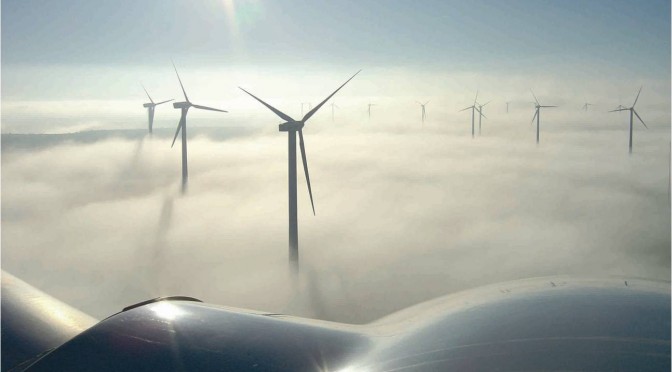“This report shows unequivocally that wind power can significantly reduce carbon emissions, is reliable, poses no threat to energy security, and is technically capable of providing a significant proportion of the UK’s electricity supply with minimal impact on the existing operation of the grid. Claims to the contrary are not supported by the evidence.”
A major new report from IPPR and GL Garrad Hassan has today challenged critics of wind power.
The sector has faced years of criticism with opponents questioning the technical reliability of wind turbines, their impact on the grid, the scale of the emission reductions they actually deliver, and the justification for public subsidies.
This criticism has gained plenty of momentum with a group of over 100 MPs writing to David Cameron earlier this year to demand a re-think on support for wind turbines that they regard as an “inefficient and intermittent” form of energy production.
But now in a peer-reviewed report think tank IPPR and engineering consultants GL Garrad Hassan have attempted to analyse some of the most common myths that dog the wind energy sector in their landmark study, Beyond the Bluster – Why wind power is an effective technology.
Here BusinessGreen runs down the report’s main conclusions:
Myth: Wind energy subsidies are pushing up energy bills
Fact: Renewable energy subsidies do add to energy bills, but “from 2004 to 2010, government support for renewables added £30 to the average energy bill while rises in the wholesale cost of gas added £290”.
Myth: Back-up power plants mean wind energy does not deliver net reductions in carbon emissions
Fact: In 2011, wind turbines in the UK provided 15.5 terawatt hours to the grid. Due to its lower marginal cost this power would have displaced fossil fuel power from the grid, meaning that wind energy saved a minimum of 5.5 million tonnes of CO2 if gas was displaced and a maximum of over 12 million tonnes if coal was displaced. “Following this logic we can say that, using government figures about electricity generated in the UK from wind and the carbon intensity of the very best available gas technologies, the CO2 savings from wind energy were at least 5.5 million tonnes in 2011. This is around 2.5 per cent of the emissions the UK is legally obliged to save annually from 2008 to 2012, as required by the Climate Change Act 2008.”
Myth: The powering up and down of fossil fuel plants to cope with wind energy intermittency undermines their efficiency and leads to a net increase in emissions
Fact: More advanced modelling is required in the UK to disprove this hypothesis, but empirical studies from US states with a high proportion of wind energy have shown “unequivocally” that wind energy supplies have “significantly” reduced the average carbon intensity of fossil fuel power plants on the same grid. In the Mid West average wind energy carbon savings reached 831kg/MWh, while in Texas they hit 474Kg/MWh.
Myth: The “intermittent” nature of wind power makes it impossible to manage
Fact: Wind power is not “intermittent” in that it does not suddenly and unexpectedly turn on and off in the way that fossil fuel and nuclear plants do. Instead it is “variable”, meaning that increasingly accurate weather forecasting makes it possible to predict changes in output ahead of time. This makes wind energy significantly easier to manage as you bring it on to the grid.
Myth: Variable wind energy outputs will disrupt the grid and lead to blackouts
Fact: The grid can cope and is coping with variable energy inputs from wind farms across the country. “Statistical analyses of lengthy records of wind farm output data indicate that the most extreme variations are of the order of 20 per cent of total wind generation capacity in half an hour (GL Garrad Hassan 2011).The highest rates of change are similar to the rates of change of electricity demand already experienced by system operators. For example, between 6am and 8am on weekday mornings as people get up, make breakfast and head to work. Therefore short-term changes in the rate of wind power output are easily accommodated in the existing system.”
Myth: If we increase our reliance on wind energy a still day will lead to power shortages
Fact: National Grid has stated that “should no changes be made to the way that the electricity system functions, 30GW of wind power can be accommodated on the existing grid”. Current plans for wind energy capacity in 2020 stand at 28GW. Beyond 2020 long, cold, calm spells could present a challenge, but there are several international precedents that demonstrate how grids can manage high levels of reliance on wind energy. For example, both the Iberian peninsula and Ireland currently manage significantly higher proportional levels of wind energy than the UK and cope easily with calm periods. In addition, engineers are confident smart grid technologies and interconnectors with mainland Europe can provide a cost-effective long-term solution to the problem presented by calm periods. “The risks associated with ‘long, cold, calm spells’ have been overstated”.
James Murray, http://www.businessgreen.com/author/profile/1452/james-murray


